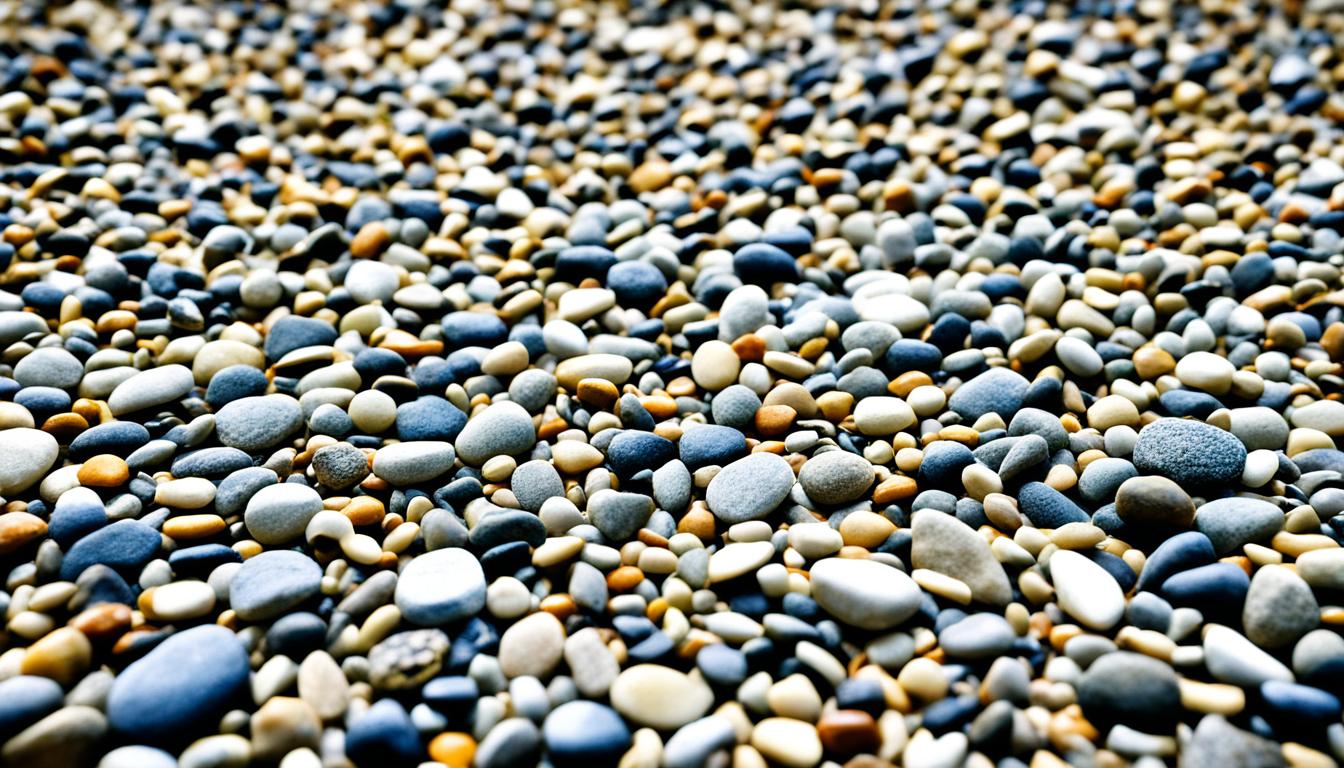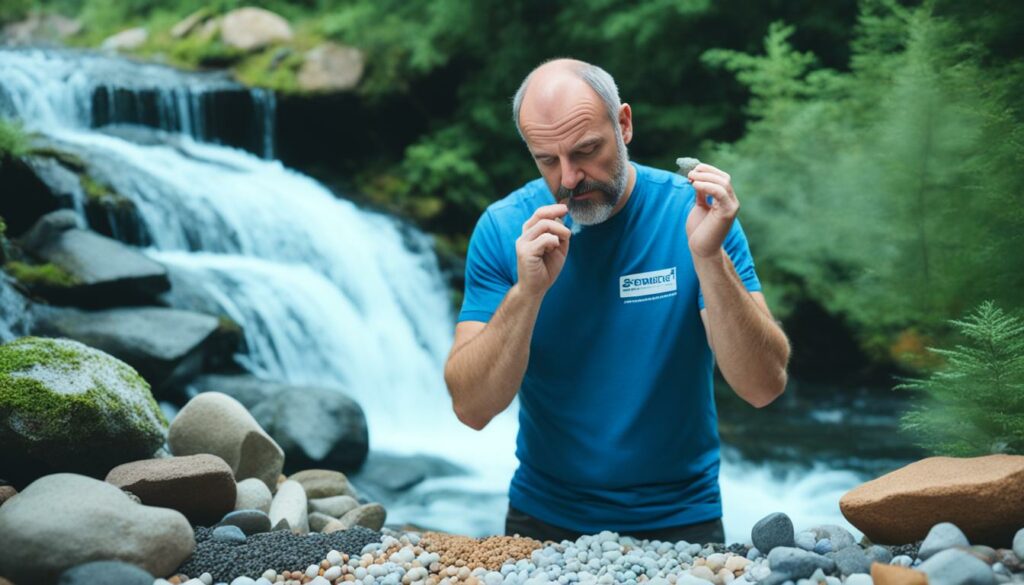
When it comes to designing captivating garden streams, selecting the right stream construction materials is crucial. These materials not only influence the aesthetic appeal but also determine the durability and longevity of your landscape streams. With an array of options available, understanding the best materials for your project can significantly enhance both the look and functionality of your outdoor spaces.
Incorporating the appropriate materials ensures that your garden streams harmonize with the natural environment while also supporting local ecosystems. As you embark on this journey, consider how each material can contribute to the beauty and sustainability of your landscape.
Understanding the Importance of Stream Construction
The importance of stream construction extends far beyond aesthetics. By integrating streams into landscapes, property owners can create beautiful focal points while promoting ecological balance. These constructed streams often serve critical purposes, including enhancing drainage and preventing soil erosion.
Well-constructed streams offer numerous benefits, primarily by supporting local wildlife habitats. They create a much-needed refuge for various aquatic and terrestrial organisms. The intricate ecosystems that develop around these streams facilitate a balance that benefits both plants and animals.
Incorporating streams into a garden environment greatly improves water quality. Managed water flow helps filter contaminants, ensuring cleaner water runs through the landscape. These aspects underscore the myriad of benefits of garden streams, appealing to both homeowners and landscapers seeking sustainable solutions.
When understanding the importance of stream construction, it becomes clear that the environmental advantages are compelling. Investing in high-quality materials for building streams means contributing to a healthier ecosystem, resulting in vibrant outdoor spaces that enrich lives and support biodiversity.
Key Benefits of Garden Streams
Creating backyard streams goes beyond mere aesthetic appeal. One of the significant key benefits of garden streams is their ability to enhance outdoor spaces, providing a tranquil atmosphere for relaxation and contemplation. The soothing sound of flowing water acts as a natural stress reliever, making any backyard a serene escape from daily life.
Incorporating well-designed streams into your landscape can significantly increase property value. Prospective homebuyers often view water features as desirable elements, elevating the overall attractiveness of a property. A backyard stream can serve as a tasteful focal point in your garden, drawing the eye and sparking interest.
Moreover, these water features play a crucial role in promoting biodiversity. By attracting a variety of wildlife, such as birds, frogs, and beneficial insects, backyard streams contribute to a healthier ecosystem. The presence of these creatures creates a dynamic environment within your garden, offering opportunities for education and observation.
A properly maintained backyard stream does more than just provide beauty; it fosters an ecological balance that benefits surrounding plants and animals. The key benefits of garden streams encompass both aesthetic and ecological advantages, making them an invaluable addition to any landscape design.
Popular Stream Construction Materials
When embarking on the journey of stream construction, selecting the right materials is crucial for functionality, aesthetics, and environmental harmony. Recognizing the popular stream construction materials can set the tone for both the form and purpose of your stream, allowing you to create a beautiful and sustainable feature in your landscape.
Natural Stone for Aesthetics and Durability
Natural stone is a highly sought-after option in stream construction. Its timeless beauty and durability make it a popular choice for those looking to enhance their outdoor settings. The appeal of natural stone lies in its ability to blend seamlessly with nature while providing the necessary structural support. Over time, this material withstands environmental elements, ensuring that your stream maintains its integrity.
Concrete for Structural Integrity
Another widely used material is concrete. Recognized for its strength, concrete offers exceptional stability against erosion, which is critical for any stream. This material can be molded into various shapes and designs, allowing for customized features that cater to individual preferences. The versatility of concrete ensures that it meets both functional and aesthetic needs in stream construction.
Natural Vegetation and Plantings
Incorporating natural vegetation is essential in stream design. Utilizing native plants not only beautifies the area but also contributes to soil stabilization and erosion control. These plants play a vital role in filtering runoff, thereby improving overall water quality. Furthermore, they provide essential habitats for local wildlife, enriching biodiversity around the constructed stream.
Stream Construction Materials: What to Choose
Choosing the right stream construction materials requires careful consideration of various factors. The right materials can influence not only the aesthetic appeal of the stream but also its longevity and environmental impact. Understanding these aspects will help ensure a sustainable choice.
Factors to Consider When Selecting Materials
When selecting materials for stream construction, keep the following factors in mind:
- Durability: Choose materials that withstand environmental challenges and weather conditions.
- Aesthetic Compatibility: The materials should complement the surrounding landscape.
- Maintenance Requirements: Consider how much upkeep will be needed over time.
- Budget: Set a financial limit and explore materials that provide the best value.
The choice of materials can significantly affect the overall ecological balance of the stream. Thoughtful selection promotes both beauty and functionality while reducing future repair needs.
Environmental Impact of Materials
Assessing the environmental impact of stream materials is crucial. When evaluating options, consider:
- Eco-Friendliness: Natural, sustainably sourced materials tend to have a lower environmental impact compared to synthetic ones.
- Support for Local Ecosystems: Using materials that encourage local flora and fauna promotes biodiversity.
- Pollution: Minimize the use of non-renewable options to reduce emissions and harmful byproducts.
Incorporating environmentally friendly materials aids in creating a sustainable landscape that supports the surrounding ecosystem. Prioritizing ecological considerations during the material selection phase makes a significant difference in the long run.

Maintenance Considerations for Your Streams
Ensuring the longevity of your garden streams requires diligent stream maintenance practices. Regular attention helps maintain the aesthetic and ecological health of the area. Key tasks include:
- Clearing debris such as leaves and branches from the streambed.
- Monitoring water quality to prevent algal blooms and ensure the habitat remains healthy.
- Checking the proper function of pumps or filtration systems to maintain clear water.
In addition, proactive garden stream upkeep involves assessing erosion control measures. Inspecting the surrounding vegetation for health is equally crucial. Healthy plants not only enhance the beauty of the stream but also contribute to its ecological stability.
By approaching stream maintenance with a routine schedule, homeowners can enjoy the numerous benefits these features provide while safeguarding their investment in outdoor aesthetics and wildlife habitats.
Design Tips for Landscape Streams
Creating an inviting landscape stream design involves careful consideration of how streams can be integrated into your backyard. Thoughtful placement and design can enhance the overall aesthetics and functionality of outdoor spaces. Balancing visual appeal with environmental considerations will promote healthy ecosystems.
Integrating Streams into Your Backyard
Thoughtful backyard stream integration can dramatically transform the ambiance of your landscape. Focus on designing streams that flow naturally with the existing terrain. Incorporating curves and bends will add visual interest while mimicking the organic flow of water. This approach not only creates a scenic view but also encourages natural wildlife movement through your garden.
Enhancing Wildlife Habitats Around Streams
Creating a thriving ecosystem near your landscape stream benefits surrounding wildlife habitats. Implement natural elements such as stones, logs, and native plantings along the stream's edges. This not only provides shelter and food sources for local fauna but promotes biodiversity. Utilizing native flora harmonizes with the environment, helping to establish a resilient ecological system.

Conclusion
In summary, the careful selection of stream construction materials is vital for creating both functional and visually appealing garden streams. The synthesis of aesthetic design, structural integrity, and environmental considerations underscores the need for thoughtful material choices. By understanding the various options available and their respective benefits, individuals can pave the way for successful stream design.
Embracing sustainable practices not only elevates the beauty of outdoor spaces but also enhances biodiversity. The benefits of garden streams extend beyond mere visuals; they contribute to a healthier ecosystem and provide a habitat for various species. As homeowners and landscapers strive for their landscaping ambitions, the focus on impactful design and material selection will play a crucial role in achieving lasting results.
Ultimately, informed decisions regarding material use will enrich the gardening experience while promoting environmental health. With a comprehensive summary of stream construction materials at hand, it's time to embark on building a stunning and sustainable outdoor retreat that offers both tranquility and ecological balance.








